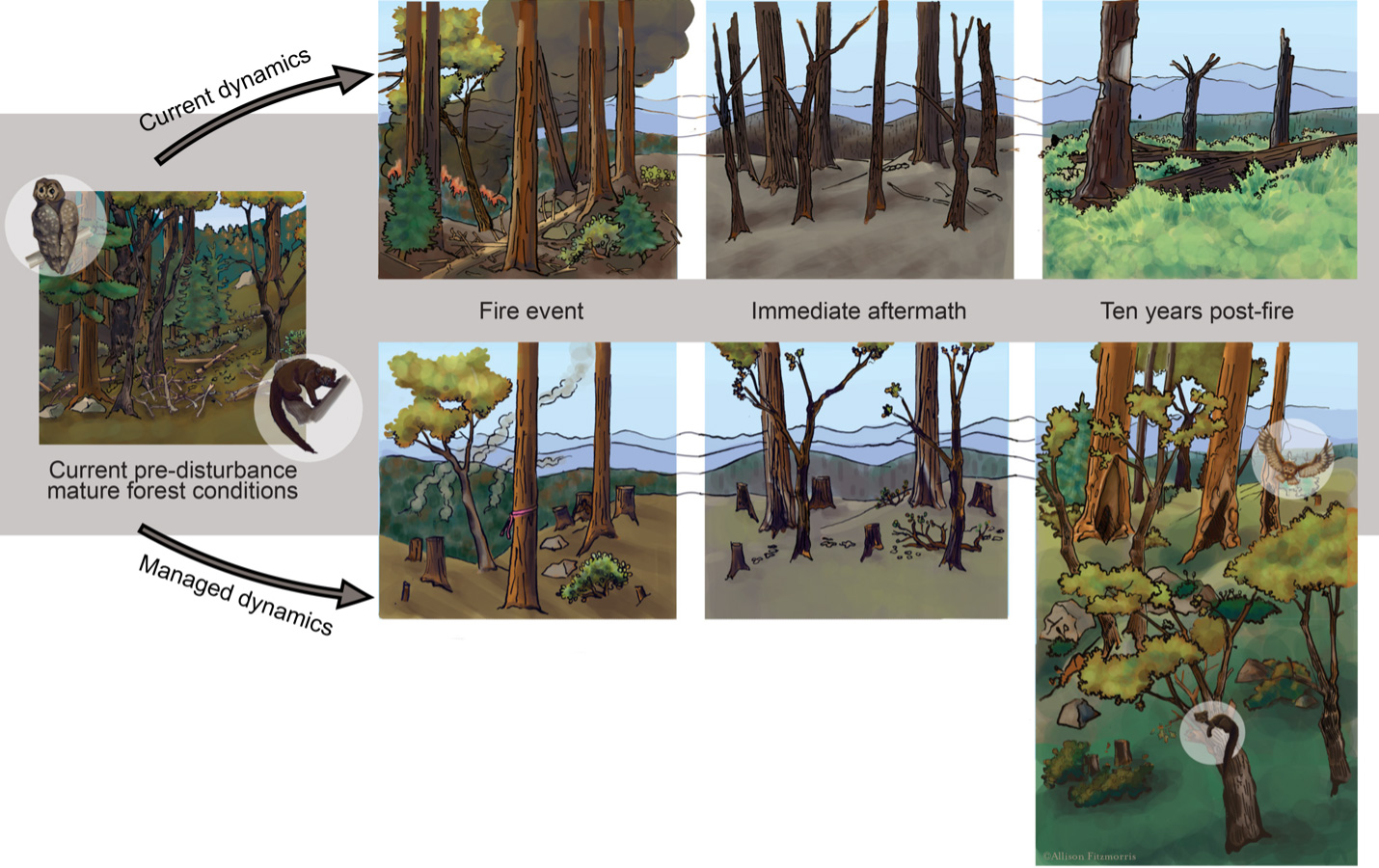2022-10-31 カリフォルニア大学バークレー校(UCB)

<関連情報>
- https://nature.berkeley.edu/news/2022/10/widespread-forest-disturbances-hold-potentially-grave-consequences-wildlife
- https://esajournals.onlinelibrary.wiley.com/doi/10.1002/eap.2763
大規模攪乱によるカリフォルニアの成熟針葉樹林の生息地の急速な減少 Mega-disturbances cause rapid decline of mature conifer forest habitat in California
Zachary L. Steel,Gavin M. Jones,Brandon M. Collins,Rebecca Green,Alexander Koltunov,Kathryn L. Purcell,Sarah C. Sawyer,Michèle R. Slaton,Scott L. Stephens,Peter Stine,Craig Thompson
Ecological Applications Published: 20 October 2022
DOI:https://doi.org/10.1002/eap.2763
Abstract
Mature forests provide important wildlife habitat and support critical ecosystem functions globally. Within the dry conifer forests of the western United States, past management and fire exclusion have contributed to forest conditions susceptible to increasingly severe wildfire and drought. We evaluated declines in conifer forest cover in the southern Sierra Nevada of California during a decade of record disturbance by using spatially comprehensive forest structure estimates, wildfire perimeter data, and the eDaRT forest disturbance tracking algorithm. Primarily due to the combination of wildfires, drought, and drought-associated beetle epidemics, 30% of the region’s conifer forest extent transitioned to non-forest vegetation during 2011-2020. Fifty percent of mature forest habitat and 85% of high density mature forests either transitioned to lower density forest or non-forest vegetation types. California spotted owl Protected Activity Centers (PAC) experienced greater canopy cover decline (49% of 2011 cover) than non-PAC areas (42% decline). Areas with high initial canopy cover and without tall trees were most vulnerable to canopy cover declines, likely explaining the disproportionate declines of mature forest habitat and within PACs. Drought and beetle attack caused greater cumulative declines than areas where drought and wildfire mortality overlapped, and both types of natural disturbance far outpaced declines attributable to mechanical activities. Drought mortality that disproportionately affects large conifers is particularly problematic to mature forest specialist species reliant on large trees. However, patches of degraded forests within wildfire perimeters were larger with greater core area than those outside burned areas, and remnant forest habitats were more fragmented within burned perimeters than those affected by drought and beetle mortality alone. The percent of mature forest that survived and potentially benefited from lower severity wildfire increased over time as the total extent of mature forest declined. These areas provide some opportunity for improved resilience to future disturbances, but strategic management interventions are likely also necessary to mitigate worsening mega-disturbances. Remaining dry mature forest habitat in California may be susceptible to complete loss in the coming decades without a rapid transition from a conservation paradigm that attempts to maintain static conditions to one that manages for sustainable disturbance dynamics.




カリフォルニア州および西部地域の成熟した森林では、背の高い大木が基幹林として機能している。これらの樹木は人間や、重要な野生生物に重要な生態系サービスを提供している。残念ながら、これらの重要な生態系は、数百万本の樹木を枯らすような例年にない激しい山火事や長期の干ばつによって、ますます脅かされています。
最近の研究では、2011年から2020年までの広範囲な森林攪乱を記録している。その期間にこの地域の針葉樹林の30%が非森林植生に奪われたことが判明した。また、生態学的に貴重な成熟林の生息地の50%、高密度の成熟林の85%が低密度の森林か非森林に移行していることも明らかになった。
リモートセンシングとモデリング技術を組み合わせて、森林被覆の年次減少を追跡し、旱魃の影響を受けた地域と、山火事や機械的攪乱、特に木材伐採や森林間伐が旱魃の影響を拡大させた地域とを比較した。その結果、干ばつとそれに伴うカブトムシの襲撃は、干ばつと山火事による死亡率が重なった地域よりも累積的に大きな減少を引き起こすことがわかった。この2種類の自然攪乱は、機械的活動による減少をはるかに上回った。